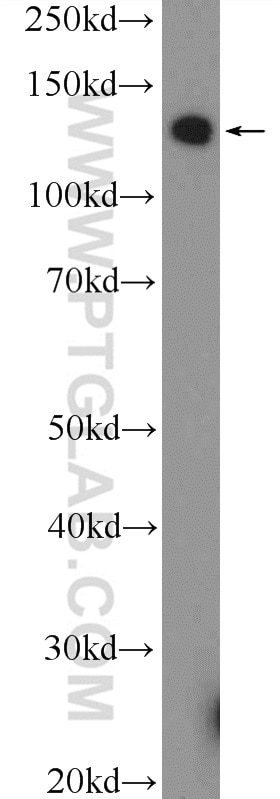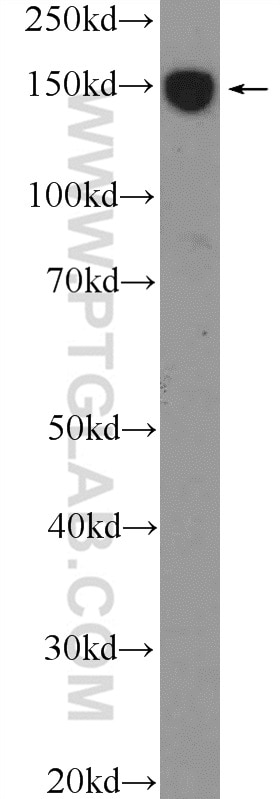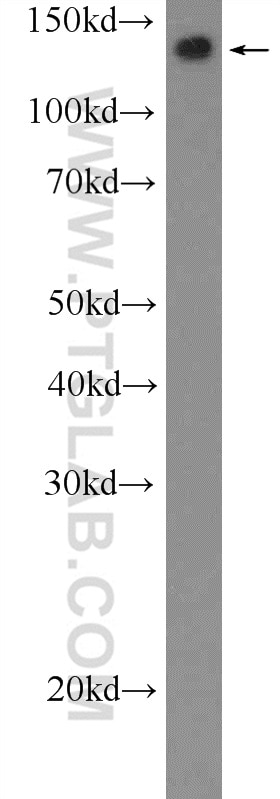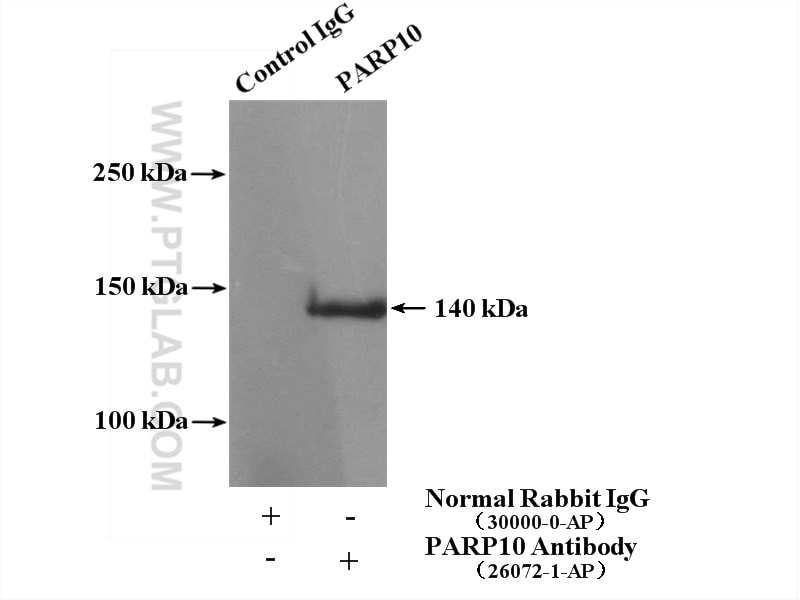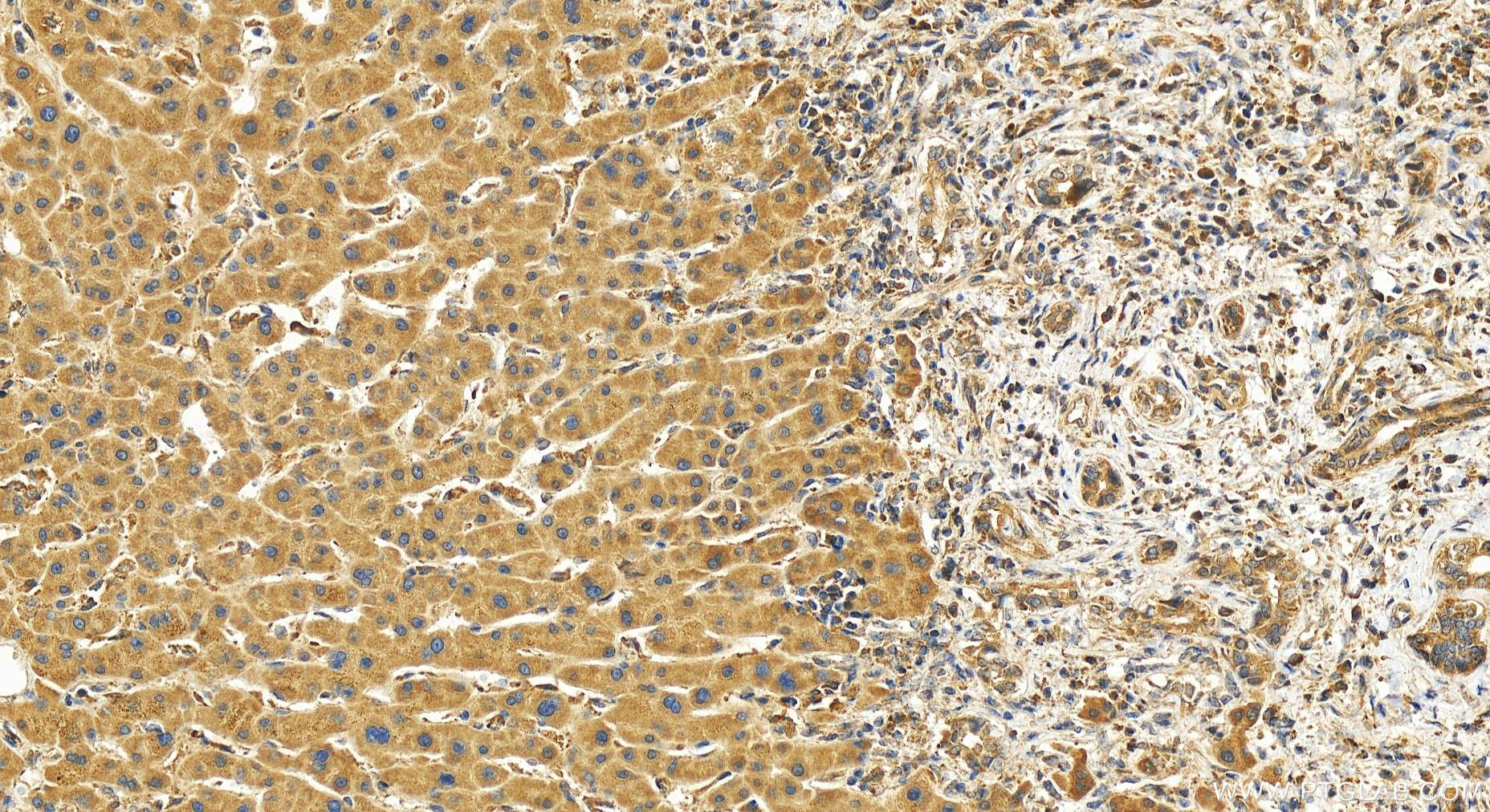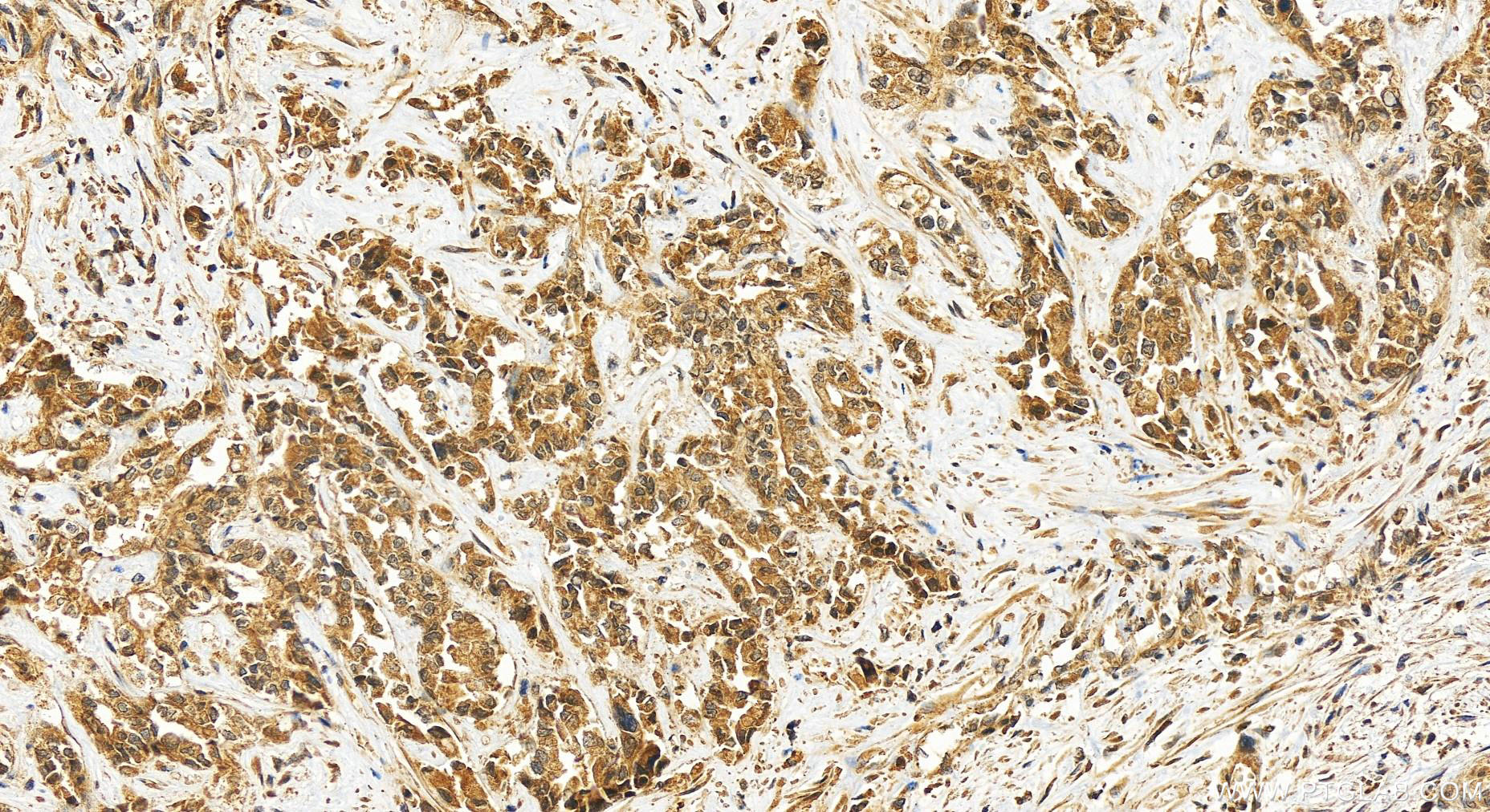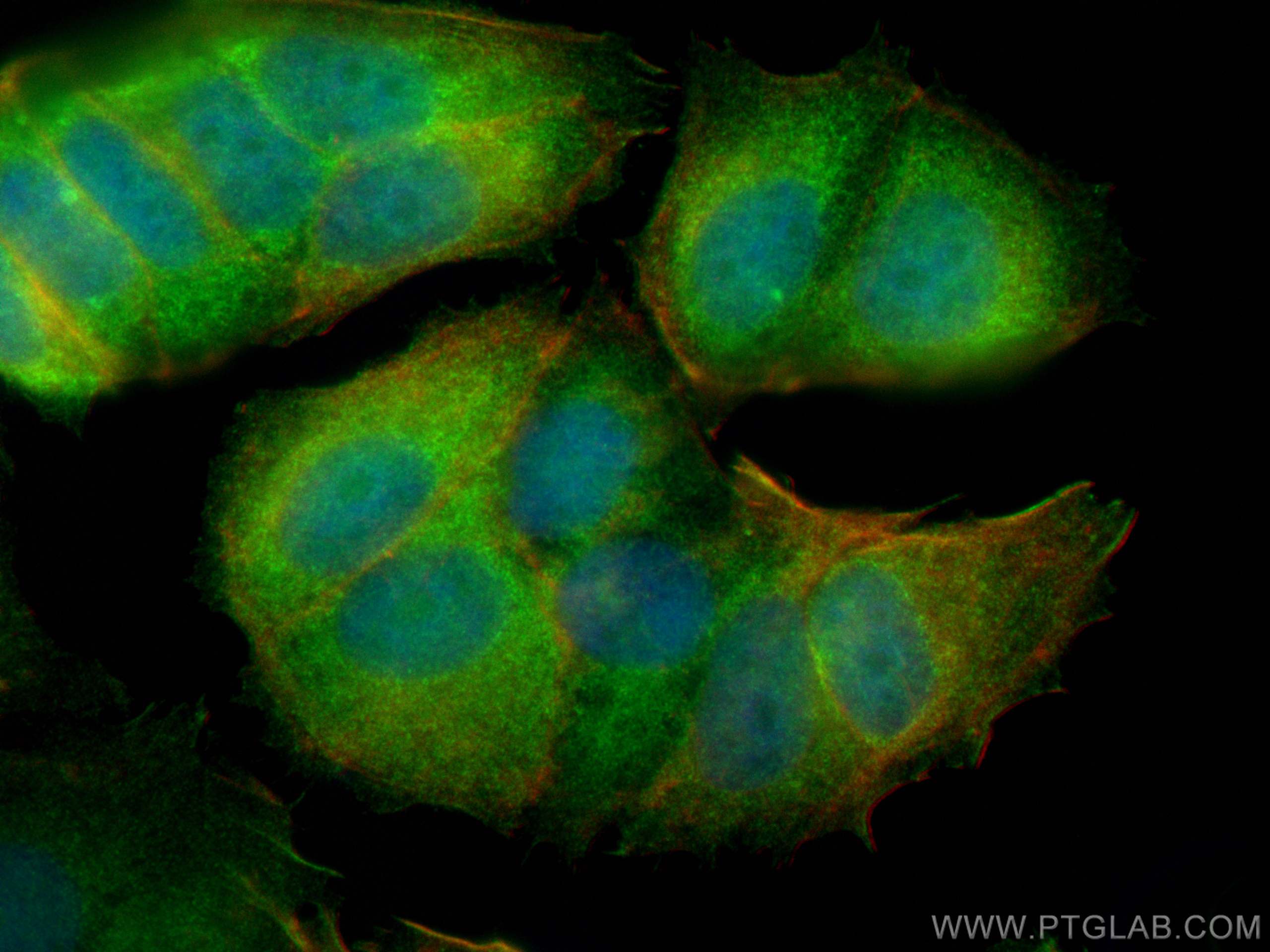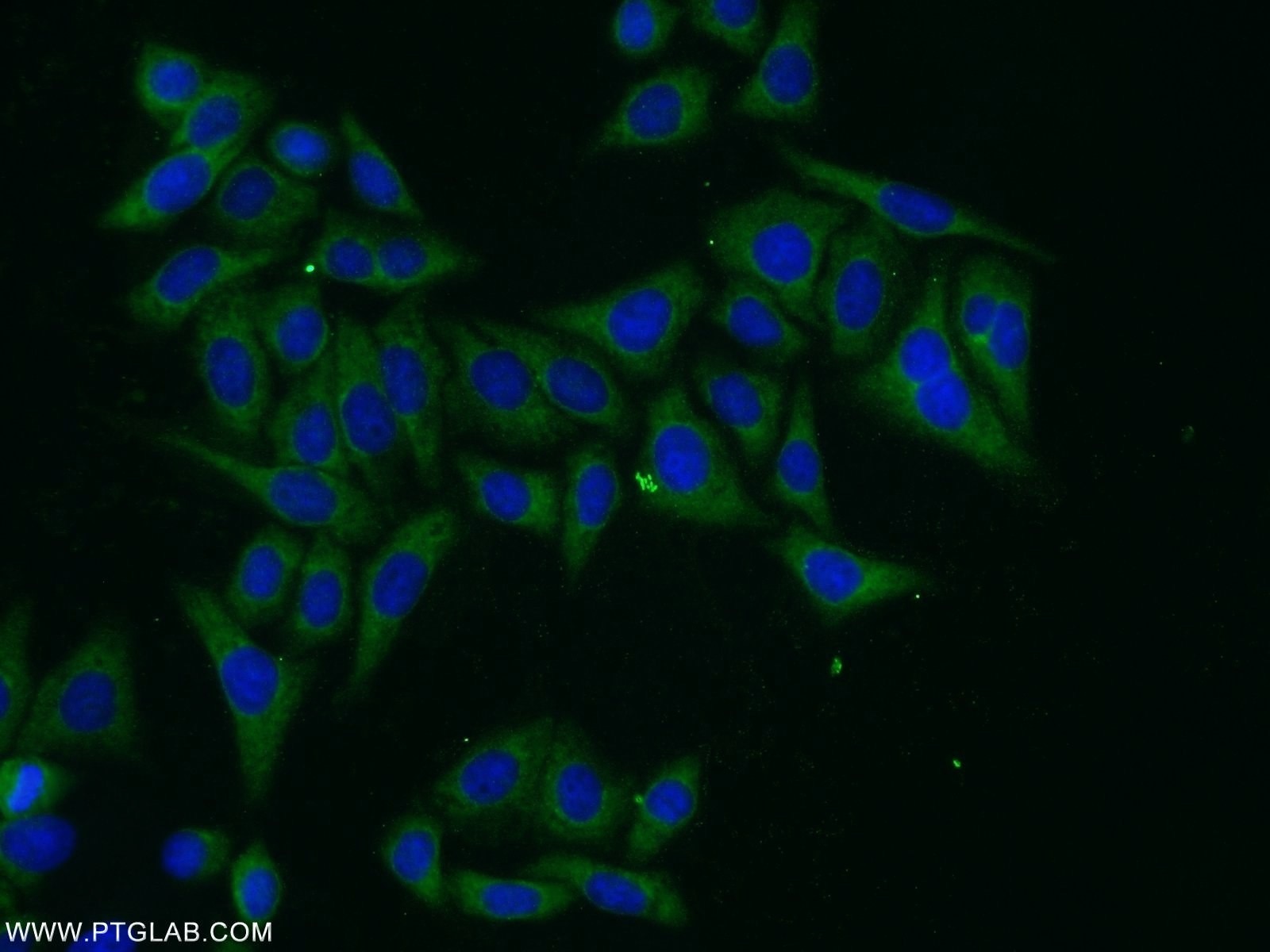PARP10 Polyklonaler Antikörper
PARP10 Polyklonal Antikörper für WB, IHC, IF/ICC, IP, ELISA
Wirt / Isotyp
Kaninchen / IgG
Getestete Reaktivität
human
Anwendung
WB, IHC, IF/ICC, IP, ELISA
Konjugation
Unkonjugiert
Kat-Nr. : 26072-1-AP
Synonyme
Geprüfte Anwendungen
| Erfolgreiche Detektion in WB | Jurkat-Zellen, HL-60-Zellen, MCF-7-Zellen |
| Erfolgreiche IP | Jurkat-Zellen |
| Erfolgreiche Detektion in IHC | human intrahepatic cholangiocarcinoma tissue Hinweis: Antigendemaskierung mit TE-Puffer pH 9,0 empfohlen. (*) Wahlweise kann die Antigendemaskierung auch mit Citratpuffer pH 6,0 erfolgen. |
| Erfolgreiche Detektion in IF/ICC | MCF-7-Zellen |
Empfohlene Verdünnung
| Anwendung | Verdünnung |
|---|---|
| Western Blot (WB) | WB : 1:500-1:1000 |
| Immunpräzipitation (IP) | IP : 0.5-4.0 ug for 1.0-3.0 mg of total protein lysate |
| Immunhistochemie (IHC) | IHC : 1:250-1:1000 |
| Immunfluoreszenz (IF)/ICC | IF/ICC : 1:50-1:500 |
| It is recommended that this reagent should be titrated in each testing system to obtain optimal results. | |
| Sample-dependent, check data in validation data gallery | |
Produktinformation
26072-1-AP bindet in WB, IHC, IF/ICC, IP, ELISA PARP10 und zeigt Reaktivität mit human
| Getestete Reaktivität | human |
| Wirt / Isotyp | Kaninchen / IgG |
| Klonalität | Polyklonal |
| Typ | Antikörper |
| Immunogen | PARP10 fusion protein Ag23457 |
| Vollständiger Name | poly (ADP-ribose) polymerase family, member 10 |
| Beobachtetes Molekulargewicht | 130-140 kDa |
| GenBank-Zugangsnummer | BC136542 |
| Gene symbol | PARP10 |
| Gene ID (NCBI) | 84875 |
| Konjugation | Unkonjugiert |
| Form | Liquid |
| Reinigungsmethode | Antigen-Affinitätsreinigung |
| Lagerungspuffer | PBS with 0.02% sodium azide and 50% glycerol |
| Lagerungsbedingungen | Bei -20°C lagern. Nach dem Versand ein Jahr lang stabil Aliquotieren ist bei -20oC Lagerung nicht notwendig. 20ul Größen enthalten 0,1% BSA. |
Hintergrundinformationen
PARP10 (Poly(ADP-ribose) polymerase family member 10) is a mono-ADP-ribosyltransferase that belongs to the PARP family. It regulates a variety of cellular functions, including gene transcription, DNA repair, and cell cycle control, by catalyzing ADP-ribosylation reactions. PARP10 is distributed in both the nucleus and cytoplasm, participating in the cellular response to DNA damage. In particular, its expression level significantly increases in response to UV-induced DNA damage. Additionally, PARP10 plays a crucial role in the antiviral response, being highly upregulated by interferon (IFN) to inhibit the replication of certain viruses and block protein translation during viral replication. PARP10 is also involved in immune regulation, interacting with NEMO to block the NF-κB signaling pathway and the production of pro-inflammatory cytokines.
Protokolle
| PRODUKTSPEZIFISCHE PROTOKOLLE | |
|---|---|
| WB protocol for PARP10 antibody 26072-1-AP | Protokoll herunterladen |
| IHC protocol for PARP10 antibody 26072-1-AP | Protokoll herunterladenl |
| IF protocol for PARP10 antibody 26072-1-AP | Protokoll herunterladen |
| IP protocol for PARP10 antibody 26072-1-AP | Protokoll herunterladen |
| STANDARD-PROTOKOLLE | |
|---|---|
| Klicken Sie hier, um unsere Standardprotokolle anzuzeigen |
Rezensionen
The reviews below have been submitted by verified Proteintech customers who received an incentive for providing their feedback.
FH Lisa (Verified Customer) (08-05-2025) | Nice working antibody that just produce low background and protein specific bands in WB
|
FH Anna-Lena (Verified Customer) (07-23-2025) | Gives a clear signal band, but the signal does not decipher strongly from the background (background still quite dark)
|
